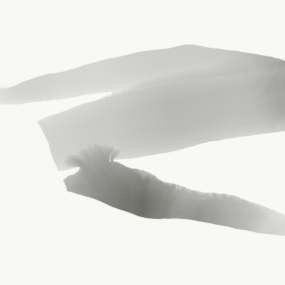Unlike the Greco-Roman world of frolicking flute playing satyrs, I have deliberately avoided the anthropomorphic.
Stephen Fearnley

Have you ever experienced that eerie sensation of “presence” when you’re alone in nature? It’s like your senses tingle, hinting at someone or something sharing the same space with you. It’s unsettling, captivating, at times invoking awe.
In Western-Classical traditions, this phenomenon was attributed to the presence of creatures like centaurs and nymphs, reaching back into the oldest of old religions, Animism.1 This world was teeming with spirits (actually it still is ). Carl Jung referred to this presence in nature as the Numina – a peculiar and otherworldly inhabitant of forests and sacred groves. It’s awake, intelligent and is pro-active, breaking into our lives to inspire. It wants to connect.2
Jung’s Numina has similarities with recent discoveries in plasma physics. Throughout our collective histories, from The First Religions to quantum science, humans have recorded awe-inspiring phenomena and mind bending interactions in the form of luminous and fiery plasmas. Indeed fire, which is a plasma, has long been regarded as a bridge to the divine.
Plasma, especially when it becomes coherent, exhibits striking similarities to Jung’s Numina: It is energy. It organises itself, displaying eerie behaviours that shockingly imply sentience. Is it alive ? In Robert Temple’s book “A New Science of Heaven: How the new science of plasma physics is shedding light on spiritual experience” everything points that way…
Indeed the picture above ,The Other, was made using fire from a single candle, depositing carbon on a glass plate, scanning it, digitally inverting it into a positive, then printing it. Smoke and fire, in essence ‘The Other’ is a picture made with plasma and carbon.
Unlike the Greco-Roman world of human-like satyrs playing flutes everywhere, I have deliberately avoided the anthropomorphic. Now, a donut-toroidal shape, a shape found in hydro-dynamics, in tornadoes, in plasma physics, in the structure of the electromagnetic particle collider at CERN, it is a shape associated with energy.
This is new narrative, a new way of visualising that “non human presence” in the landscape. No longer cluttered with engorged fauns and silly wood nymphs, Mystery and Awe is back in the Sacred Grove.
SF
1:Animism was coined by anthropologist Sir Edward Tylor through his 1871 book Primitive Culture. You can imagine how that title might be offensive, especially to Animists.I think it should be called The First Religions.
2: Ean Begg, “Numinosity,” in The Edinburgh International Encyclopaedia of Psychoanalysis, ed. Ross Skelton (Edinburgh University Press 2006).









